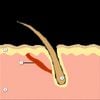community Cassiopea Announces Very Positive Interim Analysis Phase 2 Results for Breezula® (Clascoterone) in Treating Androgenetic Alopecia
Breezula® (Clascoterone) showed promising results in a Phase 2 trial for treating hair loss, being as effective as Propecia with no serious side effects. It might be released between 2021-2022, and a related acne treatment with the same active ingredient could be used in the meantime.

